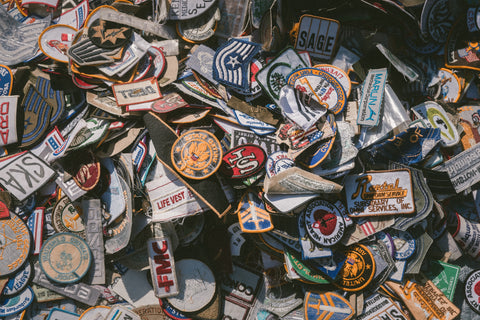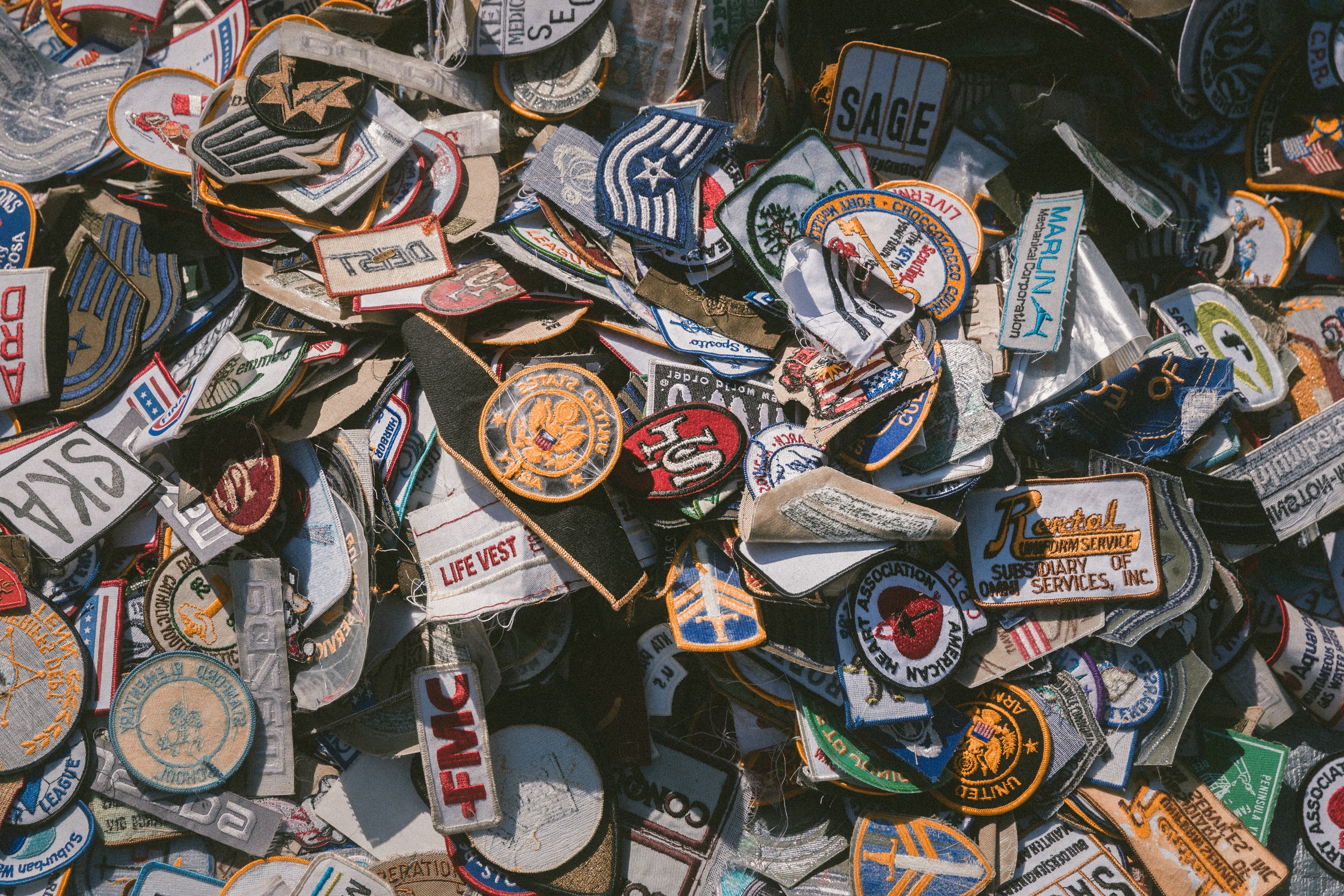
Types of Custom Patches
Whether you’re looking for patches to decorate military uniforms, sports jerseys, or club jackets, you’ll want to make sure you find the right type of patch material and backing for the job. Here are several pros and cons for a variety of different custom patches.
Plastic Backed Patches

Most regular, embroidered, or dye-sublimated patches have plastic backing in order to give the patch rigidity and help keep its shape over time. The plastic is thin enough that the patch is still malleable and it can be sewn onto the fabric of your choice.
Pros
Plastic backed patches hold their stiffness and shape over time, and are still thin enough to sew onto different garments.
Cons
Plastic backed patches don’t have many cons—the plastic back adds nothing but more durability and maintain the quality of your patch for years to come.
Heat Seal Patches

Heat sealed patches are backed with a thin, shiny coating that will melt upon contact with heat. When pressed with an iron, the back of these patches will form an adhesive bond between the patch and garment.
Pros
Heat sealed patches, sometimes called iron-on patches, can usually be adhered with a home iron and should withstand up to twenty or thirty cycles in the wash.
Cons
Certain heat sealed patches can’t be properly attached with a home iron, and in these instances a heat seal machine may be required for the heat, pressure, and time to correctly seal the patch. Heat sealed patches are ideal for most materials, but do not work with nylon or other synthetic fabrics.
Sew On Patches

Sew on patches are more flexible and easy to fold and store than patches with a heat sealed, plastic, velcro, or adhesive back. The backs of sew on patches have exposed threads and are ready to be sewn onto garments or other fabrics for a permanent application.
Pros
These patches are thin, flexible, and ready to store in bulk amounts. Sew on patches provide a very permanent application, more so than using glue or adhesive.
Cons
Sew on patches without a plastic backing can be more fragile before application. The exposed threads might become caught or unravel before the patch is sewn on, so more care needs to be taken before application.
Hard Hook and Loop Patches

Often used for military and law enforcement patches, hard hook and loop patches have a backing that consists of tiny hooks and loops very similar to the rough side of velcro. This allows the patch to be securely connected to a soft velcro backing that is usually purchased in conjunction.
Soft Pile Hook and Loop Patches
Similar to hard hook and loop patches, the backing of these patches is made out of the fuzzier, soft part of velcro and made to be attached to a hard hook and loop fastener that is usually sewn onto a military or law enforcement uniform. Both hard hook and loop and soft pile hook and loop patches are ideal for tactical needs where the patch may need to be replaced or reapplied frequently.
Pros
Hard hook and soft pile hook patches are ideal for law enforcement and military uniforms, making reapplication easier than sewing and resewing patches or utilizing heat and glue.
Cons
When purchasing hard hook or soft pile hook patches, you will also need to purchase the opposite backing to sew onto the garment for application — creating an extra step.
Magnet Patches

Magnet backed patches use a thin sheet of magnetic material attached to the back of the patch. Once applied, the patches can adhere to anything metal. To create a removable patch on wearables, use an opposing magnet behind the garment material.
Pros
Magnetic backing is durable and secure, creating several options for what your patch can attach to, whether it be a garment or an object.
Cons
Sewing an opposing magnet into the connecting fabric is an extra step that may seem unnecessary when compared to choosing sew on or heat sealed patches.
Pin Backing Patches

These patches are ideal for patches that may need to be replaced, reapplied, or switched around, such as those applied to bags, jackets, and uniforms. Pin backing patches have one or more straight pins sewn inside the layers of backing, allowing the patch to be used as a brooch. Butterfly clutches are used to secure the patch on the other side of the material.
Pros
Like hard hook and soft pile hook patches, pin backing patches are great for military, law enforcement, or school uniforms, allowing you to remove, reapply, and change positions without ruining the patch.
Cons
The butterfly clutches used to secure the patch may get lost, fall off, or bend and break with excessive wear.
Adhesive Patches

Although this type of backing is not as durable as other patches, adhesive backings are simple and straightforward. Backings with a sticky adhesive are made from glue pressed onto the back of a patch and overlaid with peelable paper to be removed at the time of application. These patches are similar to stickers, but the glue used is much stronger than normal sticker glue.
Pros
Adhesive patches are simple, straightforward, and quick to apply.
Cons
This type of backing is far less durable than other patch options and won’t withstand multiple cycles in the wash.
Southwest Emblem has a wide selection of patches ready to meet your organization or company’s every need. From summer camps to military uniforms, all of our patches are made with careful attention and high-quality materials to give you long-lasting products that can withstand normal wear and tear. For any questions regarding our selection of custom patches, or different types of patch backings, contact Southwest Emblem today!

